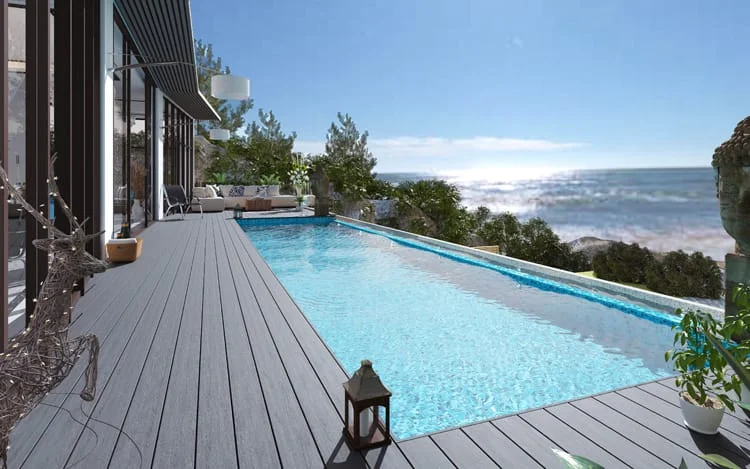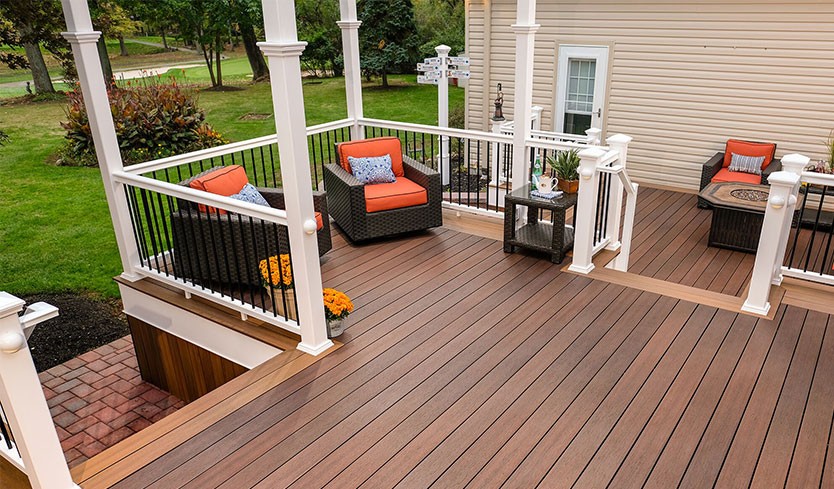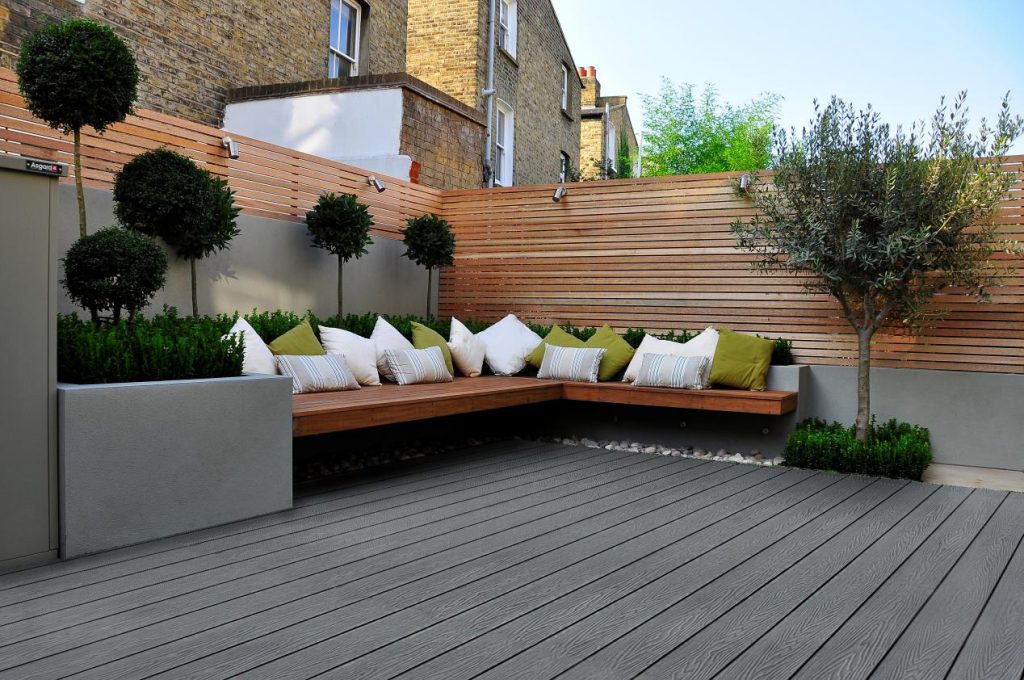Composite decking has revolutionized the world of outdoor construction by offering a sustainable, durable, and low-maintenance solution. When it comes to creating a functional yet aesthetic area around your pool, installing composite decking around pool is a smart, long-term investment.
Table of Contents
In this comprehensive guide, we will take you through every essential step of planning and executing your composite pool deck project—from materials and design considerations to installation techniques and post-installation care.
Why Choose Composite Decking for Pool Surroundings?
1.1 Water Resistance and Durability
Composite decking boards are made from a mix of wood fibers and plastic, creating a material that is highly resistant to water, rot, and decay. Unlike traditional wood, composite decking does not splinter or warp, making it ideal for high-moisture environments such as pool areas.
1.2 Low Maintenance
Unlike natural timber, composite decking doesn’t require regular sealing, staining, or sanding. Occasional cleaning with mild soap and water is enough to keep the surface looking new for years.
1.3 Safety Features
Most composite decking surfaces come with anti-slip textures and heat resistance, reducing the risks of slips or burns during hot summer days.
1.4 Aesthetic Appeal
Composite decking comes in a wide range of colors and textures that mimic real wood or offer a modern look. This allows homeowners to match their decking with existing landscaping or home exterior finishes.
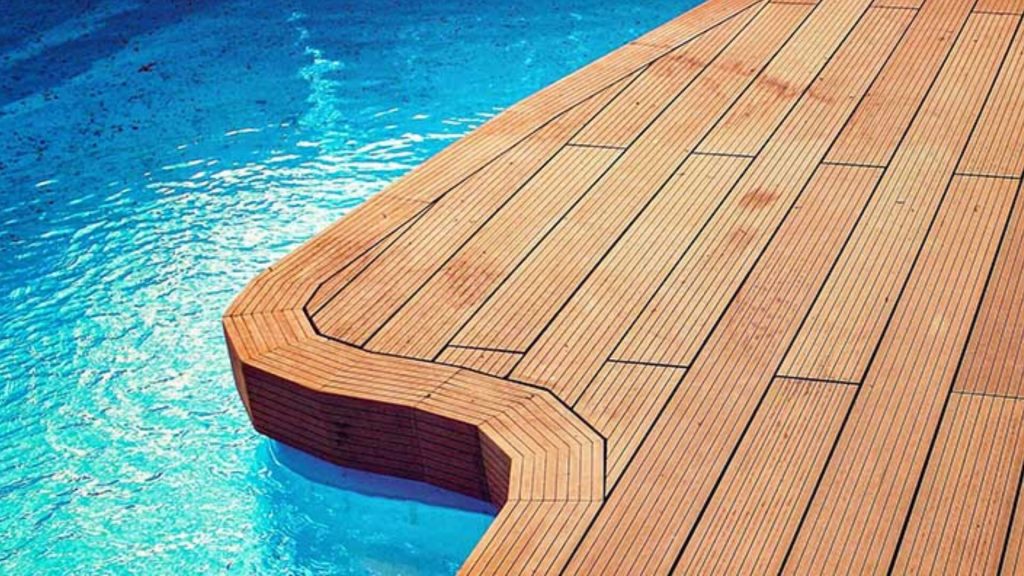
Planning and Design Considerations
Proper planning is crucial for the successful installation of composite decking around your pool. Here are the major design aspects to consider:
2.1 Pool Deck Layout
Circular, oval, rectangular, or freeform: Determine the shape of the pool and the usable walking space needed around it.
Zoning: Identify spaces for sunbathing, lounging, or dining.
Access Points: Plan for entry and exit pathways to and from the pool.
2.2 Code Compliance and Safety Regulations
Check local building codes and zoning requirements:
Minimum setback from the pool edge
Barrier or railing height requirements
Drainage specifications
Electrical code compliance for lighting or outlets
2.3 Drainage and Water Management
Proper drainage is essential to avoid standing water which can cause slipperiness or structural issues. Options include:
Installing a slight slope (1%–2%) away from the pool
Hidden drainage channels
Permeable decking boards
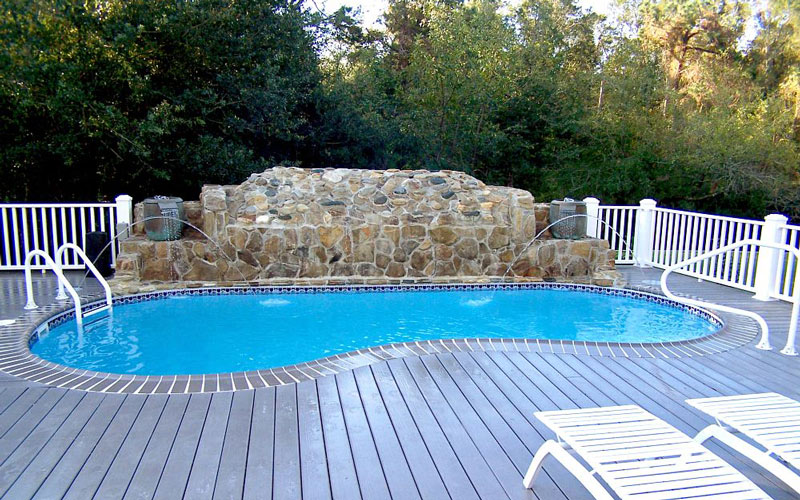
Choosing the Right Composite Decking Material
Selecting the correct type of composite decking is essential for poolside durability and aesthetics.
3.1 Types of Composite Decking
Capped Composite Decking: Features a plastic shell for superior moisture resistance.
Uncapped Composite Decking: More affordable but slightly more vulnerable to moisture over time.
PVC Decking: 100% plastic boards offering extreme water and fade resistance.
3.2 Key Selection Criteria
| Factor | Recommendation for Pool Use |
|---|---|
| Water Resistance | Choose capped composite or PVC |
| UV Stability | Opt for boards with UV inhibitors |
| Slip Resistance | Select textured surfaces |
| Heat Reflectivity | Light-colored boards stay cooler |
| Warranty | Look for at least a 25-year warranty |
3.3 Color and Style Options
Neutral tones like light gray, sand, or weathered oak are popular for pool areas. These colors reflect heat better and blend well with water features and greenery.
Tools and Materials Required
Before beginning installation, gather the following:
4.1 Essential Tools
Power drill
Circular saw (with composite blade)
Measuring tape
Spirit level
Safety gear (gloves, goggles)
Chalk line
4.2 Materials
Composite decking boards
Joists and ledger boards (treated timber or composite)
Deck screws or hidden fastener systems
Concrete footings or piers
Joist hangers and brackets
Flashing tape (for wood subframes)

Installation Process: Step-by-Step
5.1 Step 1: Prepare the Site
Clear the area of debris, vegetation, and obstructions.
Level the ground or build up with compacted gravel or concrete footings.
Mark out the area using string lines or spray paint.
5.2 Step 2: Build the Subframe
Install ledger boards securely to the house if the deck is attached.
Construct footings or piers to support the joists.
Install joists at 12″ to 16″ on center, depending on manufacturer recommendations.
Apply flashing tape to protect timber joists from moisture.
5.3 Step 3: Install the Deck Boards
Lay boards perpendicular to joists for maximum strength.
Leave a gap (typically 3-5mm) between boards for expansion and drainage.
Use hidden fasteners or screws per manufacturer guidelines.
Ensure ends are staggered for aesthetics and strength.
5.4 Step 4: Edging and Fascia Boards
Install fascia boards around the perimeter to hide joists.
Add trim boards or nosing for a finished look.
Include corner molding where needed.
5.5 Step 5: Additional Features
Lighting systems: Install recessed LEDs or post lights.
Railings: Use glass or metal railings for unobstructed views.
Built-in seating or planters for functional decor.

Post-Installation Care and Maintenance
Even though composite decking is low-maintenance, periodic care ensures longevity and aesthetics.
6.1 Cleaning Guidelines
Use a soft bristle brush and mild detergent
Rinse with a garden hose, not a pressure washer (unless allowed)
Avoid harsh chemicals or bleach
6.2 Stain Removal
For oil or grease: Use a degreaser within 48 hours
For mold: Use a composite deck cleaner with mold inhibitor
For scuff marks: Light sanding or melamine sponge can help
6.3 Preventive Measures
Use outdoor rugs made for composite decks
Place furniture on rubber feet
Avoid placing hot grills directly on decking
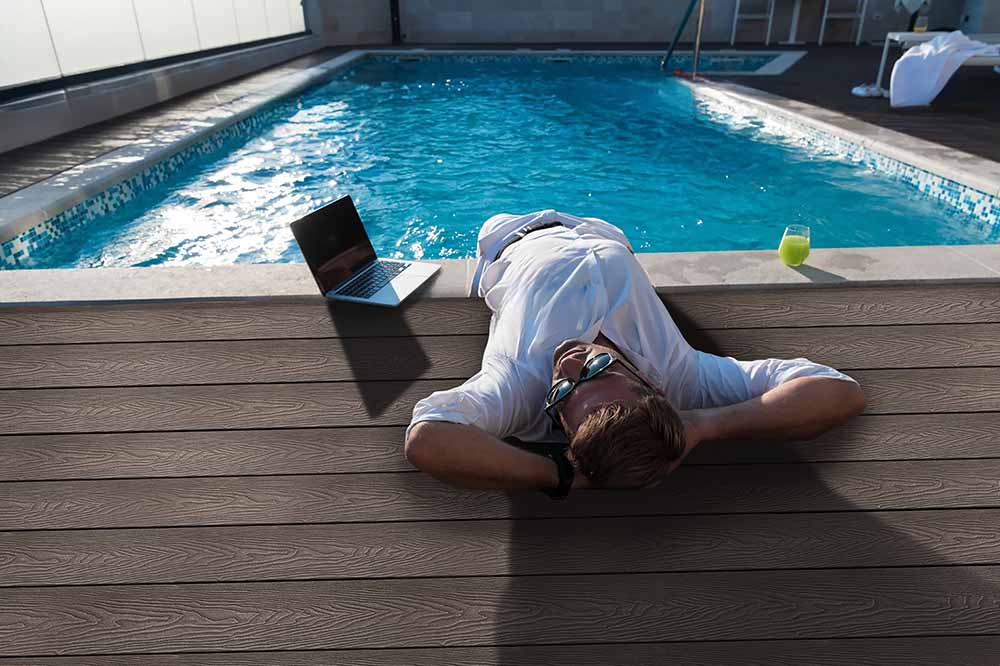
Pros and Cons of Installing Composite Decking Around Pool
7.1 Advantages
Water-resistant and slip-resistant
Minimal maintenance
Long lifespan (25–50 years)
Fade and UV resistant
No splinters or warping
Eco-friendly (many made from recycled materials)
7.2 Disadvantages
Higher upfront cost than pressure-treated wood
Can get hot in direct sun (choose light colors)
Not all boards are equally durable—brand quality matters
Cost Analysis
8.1 Material Costs
| Type | Cost per Sq. Ft. |
|---|---|
| Basic Composite | $4 – $6 |
| Capped Composite | $6 – $10 |
| Premium PVC | $10 – $15 |
8.2 Labor Costs
DIY: Saves on labor but requires time and skills
Professional Installation: $10–$20 per square foot
8.3 Long-Term Value
Reduced maintenance costs
Fewer repairs over time
Better resale value of property
Environmental and Health Benefits
Sustainability: Most composite boards use recycled wood and plastic
No chemical treatments: Unlike pressure-treated wood, they don’t leach harmful chemicals
Allergy-safe: No mold or splinters to irritate skin or respiratory systems
Common Mistakes to Avoid
Ignoring manufacturer installation guidelines
Inadequate drainage or improper slope
Over-tightening fasteners, which can cause board cracking
Failing to acclimate boards to local climate before installation
Skipping expansion gaps, leading to board warping
Frequently Asked Questions
Q1: Can composite decking be installed directly on concrete?
Yes, but you’ll need to install sleepers (pressure-treated wood or composite joists) to create airflow and allow fastening of the boards.
Q2: How long does composite decking last around a pool?
With proper installation and care, composite decking can last 25–50 years, even in harsh poolside conditions.
Q3: Does composite decking get hot in the sun?
Yes, darker colors can get hot. Choose lighter shades and consider shaded pergolas or outdoor rugs to minimize heat.
Conclusion: Is Composite Decking the Right Choice for Your Pool?
Installing composite decking around pool areas provides an excellent balance between performance and aesthetics. From its superior water resistance and durability to its minimal upkeep requirements, composite decking is a top-tier material for modern poolside landscapes.
While the initial investment may be higher than traditional wood, the long-term benefits—including safety, appearance, and longevity—make it a wise choice for homeowners who want to create a relaxing, stylish, and functional outdoor retreat.
Final Tip: Work with Reputable Suppliers
Always choose composite decking from reputable manufacturers – such as Hosung WPC that offer solid warranties, consistent quality, and detailed installation guides. For those seeking eco-friendly and high-performance options, contact leading WPC manufacturers who specialize in outdoor pool decking solutions.
If you’re ready to transform your poolside into a luxurious and safe haven, composite decking is the first step toward achieving your vision.

